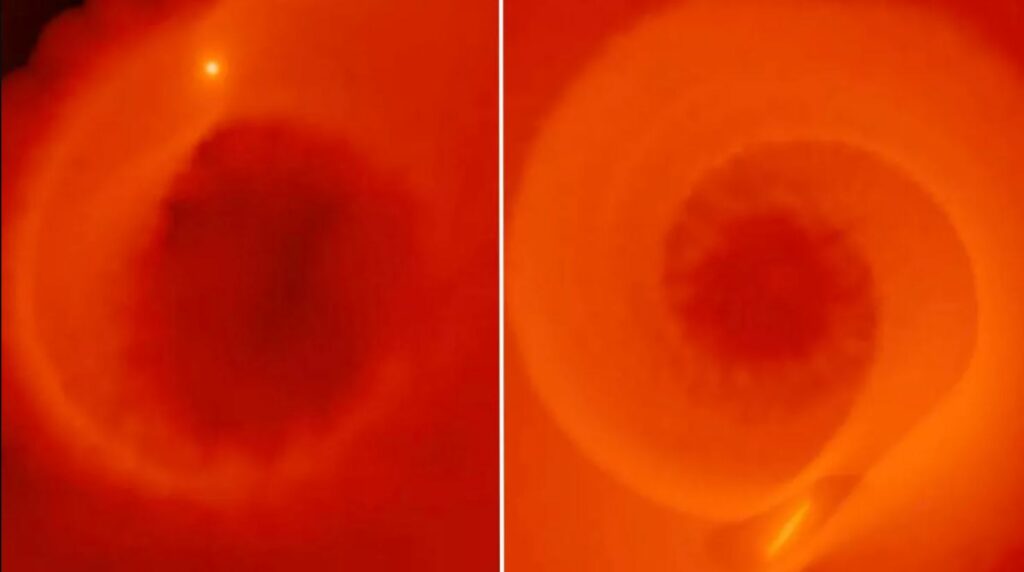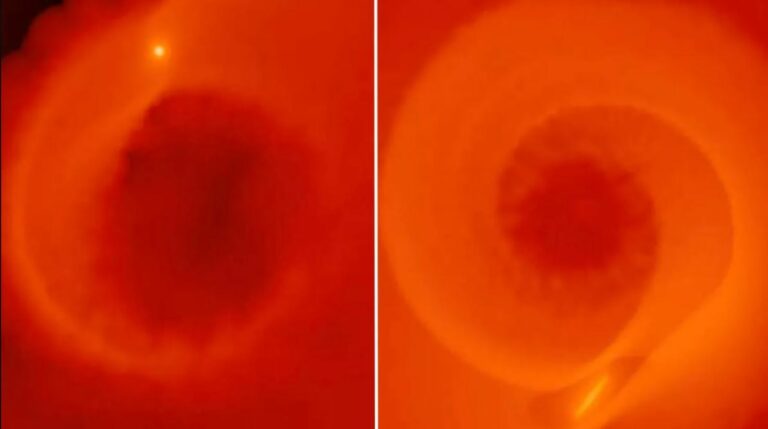Unraveling the Enigmatic Stellar Outburst: A Colossal Flare Surpassing Solar Flares by Trillions and Enduring for 85 Years
Recent research aims to shed light on the perplexing surge observed in the young star, FU Ori, located 1,200 light-years away from Earth. Astonishingly, this celestial phenomenon, which commenced approximately 85 years ago, continues to radiate with unparalleled luminosity, defying anticipated dimming. Scientists hypothesize that the surge in brightness can be attributed to the transfer of matter from a scorching disk encircling the protostar to its surface.

The University of Leicester’s team simulated a scenario suggesting that the extraordinary surge stemmed from a massive gas giant planet, roughly ten times the size of Jupiter, venturing too close to the developing star. This ill-fated encounter triggered what the researchers describe as an “extreme evaporation” of the super-Jupiter, immolating it within a searing maelstrom of materials enveloping the star. Consequently, remnants of the planet were consumed by the star itself.
“This discovery unveils a novel process, akin to a ‘disc inferno,’ involving young planets,” remarked Professor Sergei Nayakshin from the University of Leicester’s School of Physics and Astronomy. He further elucidated that while protoplanetary disks have long been considered nurturing grounds for nascent planets, these environments are far from tranquil. Instead, they teem with violent and tumultuous forces, leading to the demise of numerous young planets, devoured and incinerated by their host stars.
Nayakshin concluded, “Protoplanetary discs, often referred to as planetary nurseries, are not the serene abodes envisioned by early researchers of the solar system. They are, in fact, immensely turbulent and chaotic realms, where a considerable number—perhaps even the majority—of young planets meet their fiery fate, consumed by the very stars they orbit.”
Simulating the destruction of super-Jupiter
In their simulation, Nayakshin and the research team employed a gas giant planet formation scenario occurring at a considerable distance from FU Ori. Gravitational instabilities within the protoplanetary disk resulted in the formation of matter fragments, amalgamating into “clumps” surpassing Jupiter in size but significantly less dense than gas giants in our solar system.
These planetary clumps, or seedlings, swiftly gravitated closer to the protostar. The intensity escalated when these clumps, now fused into an infant planet, approached a distance of approximately 9.3 million miles (15 million kilometers) from the star. This proximity equates to roughly one-tenth of the distance between Earth and the sun. At this range, the extreme heat emanating from the protoplanetary disk, comprised of scorching gas and dust, caused the planet’s outer atmosphere to ignite.
Throughout the simulation, these atmospheric layers were stripped away and merged with the superheated gaseous mixture constituting the protoplanetary disk. The super-Jupiter’s close proximity to its star subjected it to formidable tidal forces generated by FU Ori’s gravitational influence. Consequently, the planet experienced “spaghettification,” a phenomenon in which the gravitational forces stretched and compressed the planet in opposing directions, ultimately tearing it apart.

This phenomenon furnishes the central star of the protoplanetary disk with an immense reservoir of fresh material, enabling it to voraciously accumulate mass and undergo a remarkable increase in brightness, thus instigating the potent flare.
“This marks the initial observation of such a flare transpiring in a star,” stated Vardan Elbakyan, a member of the research team and a scientist from the University of Leicester. “We have now identified a few dozen instances of similar flares occurring in other young stars within our sector of the galaxy.”
Elbakyan further elaborated that although the flare exhibited by FU Ori is extraordinary in terms of its duration and visibility when compared to typical young stars, the team conjectures that numerous developing planetary systems may undergo similar flaring episodes dozens of times, or even more, during the presence of their protoplanetary disks.
“If our model proves accurate, it could have far-reaching implications for our comprehension of both star and planet formation,” Nayakshin concluded. “Now, it is crucial to ascertain whether other stars displaying flares can be elucidated using the same scenario.”
The research is detailed in published in the journal Monthly Notices of the Royal Astronomical Society.
Do not forget to share your opinion with us to provide you with the best posts !




0 Comments